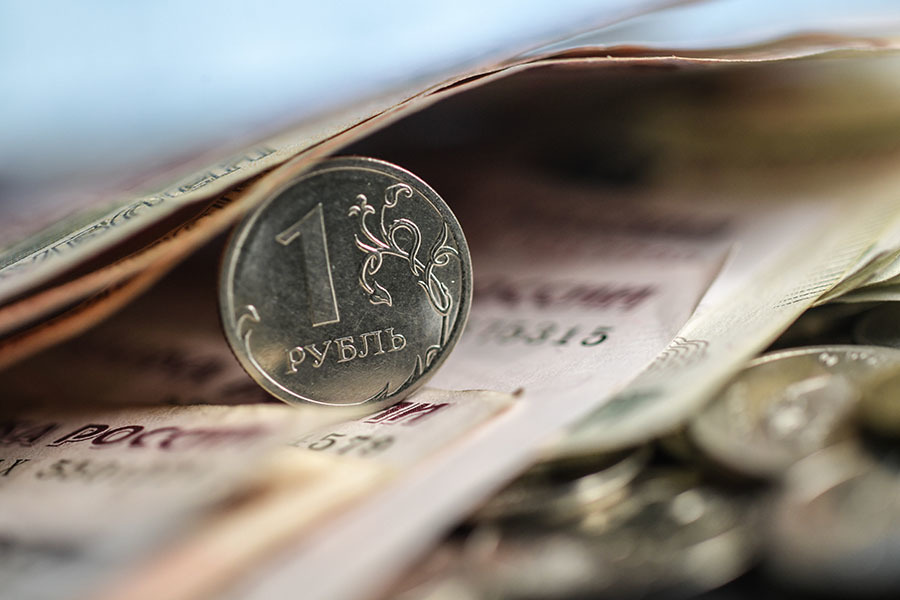On Tuesday, September 29, trading on the Moscow Exchange was accompanied by a weakening of the Russian currency.
In the first half of the day, the euro rate grew by more than 1% and for the first time since January 21, 2016 reached the level of 93.3 rubles.
The dollar exchange rate also added about 1% and rose to 79.9 rubles.
The last time a similar indicator was observed on March 30.
The negative dynamics of the national currency is largely due to geopolitical factors.
This point of view, in an interview with RT, was expressed by the investment strategist of BCS Premier Alexander Bakhtin.
“We see the risks of strengthening the sanctions rhetoric by the West, as well as the growing tension in the geopolitical background near the Russian borders.
A new "black swan" - the aggravation of the armed conflict between Armenia and Azerbaijan, has been added to the turbulent situation in neighboring Belarus, ”Bakhtin said.
Let us remind you that on September 27 it became known about renewed armed clashes between in the Nagorno-Karabakh region.
Both sides accuse each other of escalating the conflict.
Yerevan announced the "beginning of the offensive" of Azerbaijani troops.
Baku, in turn, announced a "military provocation" from the Armenian side.
According to experts, state statements provoked panic among investors.
“Traders do not yet understand what the results of the current Armenian-Azerbaijani conflict will be.
If other parties are involved in the confrontation, this could create an unfavorable background for all emerging market currencies, including the ruble, "Alexei Antonov, an analyst at Alor Broker, explained in an interview with RT.
Reuters
© Defense Ministry of Azerbaijan
In addition, investors are alarmed by the growing number of recorded cases of COVID-19 in Russia and the world.
As Alexander Bakhtin explained, market players fear the introduction of repeated quarantine measures, which could slow down the economic recovery.
However, in the near future, the Russian authorities and the governments of other states are unlikely to introduce significant restrictions.
This opinion was earlier expressed in an interview with RT by the head of the Accounts Chamber Alexei Kudrin.
“All countries and governments will treat the second wave of the pandemic differently than the first.
During the first wave, no one knew the extent of the infection and the consequences in terms of mortality.
Now they are more and more boldly about this.
The vaccine has already begun to be sold, and we have learned to react faster from the point of view of medicine.
That is, the consequences of the second wave, even if it is very strong, will be less, ”Kudrin explained.
According to Alexander Bakhtin, the outflow of foreign investors from the Russian federal loan bond market (OFZ) also plays against the ruble.
According to the latest data from the Central Bank, in July the share of non-residents in OFZ fell below 30% for the first time since October 2019.
Moreover, since the beginning of September, the RGBI government bond index has decreased by 1.2% and reached its lowest level since April - 151.8 points.
Federal loan bonds are debt securities guaranteed by the government of a country.
Investors buy securities issued by the Ministry of Finance and receive a stable income from them.
In other words, holders of government bonds lend their money to the Russian economy.
The yield on debt securities directly depends on the interest rate set in the country.
Since since the beginning of 2020, the Central Bank has already reduced the borrowing rate from 6.25 to 4.25% per annum, investments in OFZs have become less profitable for investors.
RIA News
© Vladimir Trefilov
According to experts, the weakening of the ruble is still holding back the actions of the Bank of Russia.
Recall that to stabilize the exchange rate from March 10, the regulator began to proactively sell foreign currency in the domestic market.
Thus, the Central Bank artificially increases the demand for rubles.
In total, during this time, the volume of currency sales amounted to about 1.2 trillion rubles.
Moreover, starting from October 1, the Bank of Russia plans to additionally increase the daily volume of foreign currency sales.
This is stated in the official statement of the regulator.
The stable macroeconomic indicators of Russia also provide some support to the Russian currency.
As Alexander Bakhtin emphasized, investors positively assess the low level of public debt and significant amounts of the country's gold and foreign exchange reserves.
Against this background, experts interviewed by RT do not yet expect further depreciation of the ruble.
“There are no fundamental factors for the weakening of the Russian currency now.
Even if the dollar rate goes over the psychological mark of 80 rubles, this will not cause the population to buy up foreign currency and a sharp rise in the price of goods.
Moreover, the price of oil is steadily holding above the level of $ 40 per barrel, "said Georgy Vaschenko, head of the trading operations department in the Russian stock market at Freedom Finance, to RT.
According to the forecast of Alexei Antonov, if the current conditions persist until the end of autumn, the dollar exchange rate will remain in the corridor of 79-80 rubles, while the euro rate will be close to 90 rubles.
However, according to Alexander Bakhtin, in December the figures may return to the marks of 74-75 and 86-87 rubles, respectively.

